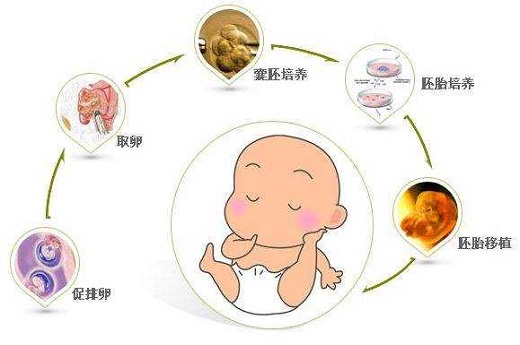相信有不少人都想知道成都做试管婴儿需要做什么工作,思考过成都哪里可以做试管婴儿这个问题,存在很多的疑问,希望本篇文章能够帮助大家解答目前的疑问,能够有效的帮助到大家。
一、成都哪里可以做试管婴儿
1、试管婴儿技术是辅助生殖医学技术中最常用的操作技术方法,由于其成功率较高而得到广泛的应用。主要包括女方双侧输卵管阻塞、女方年龄偏大;男方患有中重度少弱畸形精子症和免疫性不育、不明原因不育;男女双方多年未孕,通过3次人工授精未孕而采用试管婴儿。试管婴儿分一代试管和二代试管,一代试管婴儿又叫体外受精-胚胎移植,大约3万块钱人民币以上,二代试管又称卵泡内单精子注射。
2、四川省生殖健康研究中心附属生殖专科医院(简称四川省生殖专科医院)起源于1985年,至今已有三十多年的发展历史。医院起源于1985年在成都市人民南路四段15号开办的“四川省计划生育科研所专科门诊部”;1995年更名为“四川省生殖健康研究中心附属医院”;2002年搬迁至一环路西三段13号附5号,并更名为“四川省生殖健康研究中心附属门诊部”;2007年升级更名为“四川省生殖健康研究中心附属生殖专科医院”。是一所从事两性生殖健康及不孕不育专业研究与临床诊治的公立医疗机构。凭借领先的不孕不育临床诊疗技术,已成为西南地区具有良好口碑的不孕不育专科医院。

二、成都哪个医院试管婴儿成功率高
如果想要做试管婴儿,最好选择一个比较权威的医院,毕竟试管婴儿对于女性来说是有很大的影响的,如果试管婴儿不成功的话,就会大大影响女性身体的健康,那么成都哪个医院试管婴儿成功率高呢?
试管婴儿是一项复杂而日渐成熟的医学助孕技术,近些年有不少不孕夫妻要求放弃其他治疗,直接采用试管婴儿的技术来达到怀孕的目的,圆了自己做父母的梦想,那么成都哪个医院试管婴儿成功率高呢?
目前来讲成都地区:华西二院,省医院,省妇幼,锦江妇幼,西囡医院,中医药二附院,妇女儿童医院7家医院可以做试管,要说那家好,这copy个要看自己的。比如你到那家方便?时间、地点等等很多因素。真要推荐的话推荐三个吧:华西医院,省医院,锦江妇幼(西囡靠牌锦江)成功了成功率就是百分百,没成功就是零,理性选择医院。
目前成都能做试管婴儿的医院有四家:
1、四川大学华西第二医院:正式运行常规体外受精-胚胎移植、卵胞浆内单精子显微注射、供精人工授精技术。
2、成都市锦江区妇幼保健院:正式运行常规体外受精-胚胎移植、卵胞浆内单精子显微注射技术。
3、四川省人民医院:试运行常规体外受精-胚胎移植、卵胞浆内单精子显微注射技术。

4、四川生殖学院附属医院:试运行常规体外受精-胚胎移植、卵胞浆内单精子显微注射技术。
试管婴儿的成功率取决于几抄个很关键的因素:夫妻双方的年龄、身体状况、情袭绪以及医务人员的水平和经验等。目前,我国大部分甲等或妇产专科医院,试管婴百儿一次成功率达到了40-50%,比以前提高了很度多,很多不孕不育的夫妻因为试管婴儿成功当上了爸爸妈妈问,如果你决定做试管婴儿的话最好趁答年轻身体状况好的时候做哦。
推荐四川大学华西第二医院,从05年开始做试管婴儿,成功率比较高。
试管婴儿是一门体外受精技术,所以需要提取女性的卵子,以及男性的精子。女性的卵子会通过打降调针来促进卵子的排出,男性的话可能需要采取某种刺激通过手淫,电动模等方式进行取精,取出的精子可能会放入冷冻室冷藏,试管婴儿怎么处理精子?
1.男方通过手淫取精,手淫取精困难的,可以采取刺激,比如电动模,夫妻同房取精。通过以上方法都取不出精液的话,必要时需要做睾丸穿刺或者附睾穿刺才能获得精液。
2.首先用清水洗净双手、阴茎、外阴等,用消毒毛巾或沙布擦干。然后手淫法留取精液,注意所给玻璃小杯为无菌消毒过,留取时不要触摸缘及杯内。如果手淫法采精困难,请告诉医生,无法采集者则不能做试管婴儿。最好在进入治疗周期前应先练习手淫法采集精液,以免临时因过度紧张而导致取精失败。目前卵子冷冻技术尚未过关,想要在临床应用还需要一段时间,因此如果取精失败将导致放弃该周期的治疗。

3.用于体外受精的精子可以是新鲜采集的精液,也可以是冷冻保存的精液或者是从睾丸、附睾内抽取的精子。如果是新鲜精液,采集应与取卵同时进行。实验室工作人员或护士会告诉病人注意事项和采集方法,并提供无菌的精液采集小杯。精液采集后,需马上送到实验室,实验室工作人员接照实验室方法处理精液,包括将液化的精液在加入洗涤液后离心,将精浆除去,再用上游法或密度梯度离心法将活动的精子分离出来。
以上就是关于:“成都做试管婴儿需要做什么工作和成都哪里可以做试管婴儿”的详细介绍了,希望对大家有所帮助,如果您还想了解更多内容,欢迎在本站查询更新内容。





